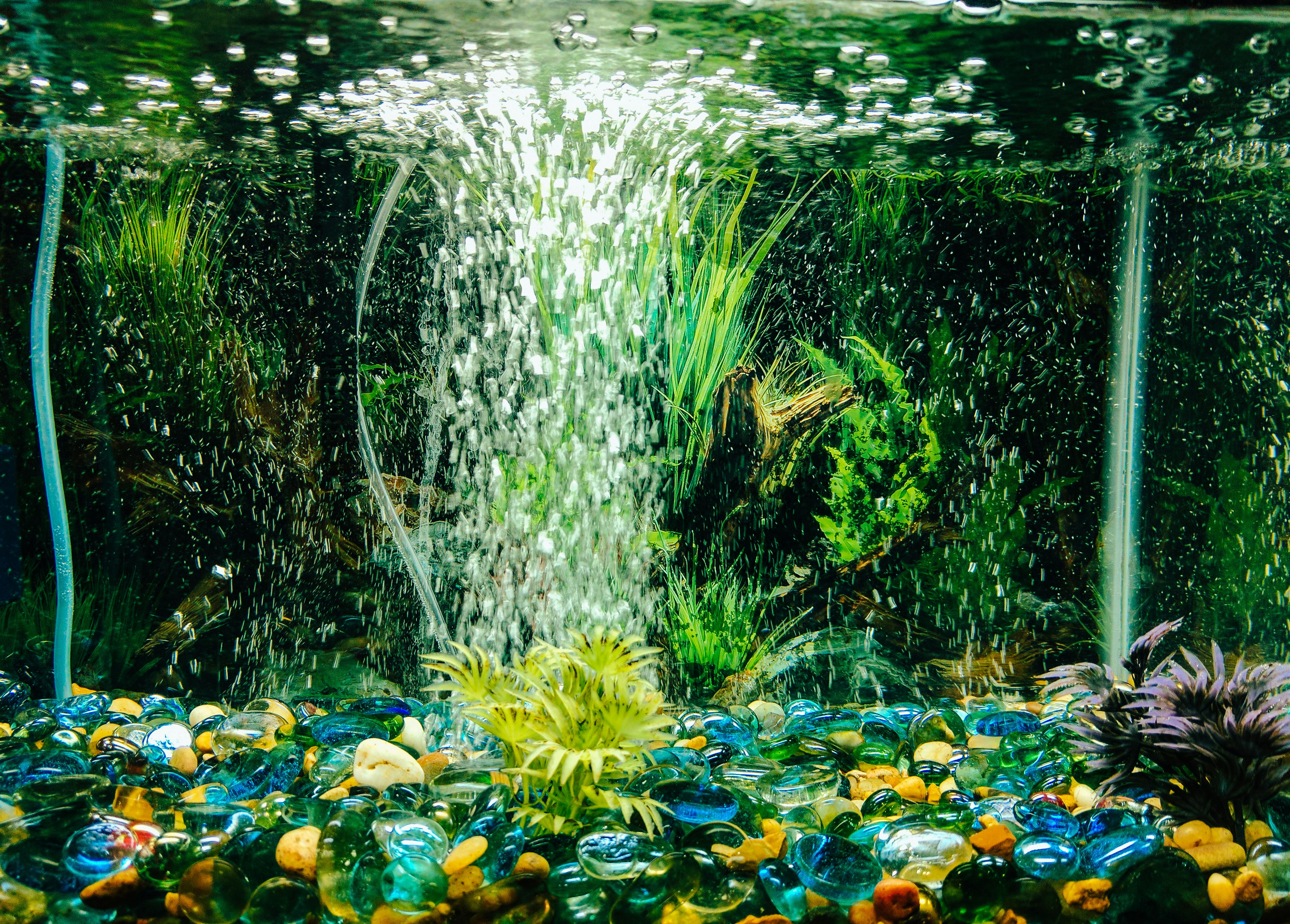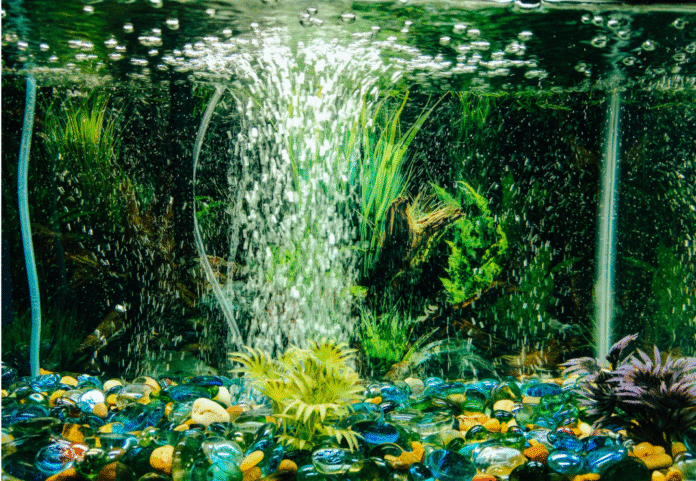
What is Fish Tank Cycling?
Fish tank cycling is a fundamental concept in aquarium keeping that entails establishing a balanced ecosystem within the tank. This process primarily revolves around the nitrogen cycle, which is crucial for transforming harmful substances in the water into less toxic forms, thereby ensuring a healthier environment for aquatic life. When a new aquarium is set up, it typically lacks the beneficial bacteria necessary for processing fish waste and uneaten food, which leads to the accumulation of ammonia – a highly toxic substance that can be lethal to fish.
The nitrogen cycle consists of a series of biological processes that involve the conversion of ammonia into nitrites, and then into nitrates, with the assistance of specialized bacteria. Initially, ammonia is introduced into the aquarium through fish waste, decaying food, and plant material. The first group of beneficial bacteria, known as ammonia-oxidizing bacteria, begins to emerge and consume ammonia, converting it into nitrites. Although nitrites are less harmful than ammonia, they can still pose a risk to fish if present in significant concentrations.
Subsequently, a second type of beneficial bacteria, known as nitrite-oxidizing bacteria, takes over to convert these nitrites into nitrates as the cycling process continues. Nitrates are much less toxic and can be managed easily through regular water changes and the introduction of live plants, which consume nitrates as nutrients.
It is essential for aquarium beginners to understand fish tank cycling, as it plays a vital role in developing and maintaining a stable aquatic habitat. Proper cycling minimizes the risk of ‘new tank syndrome,’ where fish experience stress or mortality due to fluctuating toxic levels. Ultimately, successful fish tank cycling fosters a sustainable ecosystem, enabling fish to thrive in their new home.
Why is Cycling Essential for Fish Health?
Cycling is a critical process in establishing a healthy aquarium environment. The term “cycling” refers to the development of beneficial bacteria that break down toxic waste products produced by fish and uneaten food. When fish are introduced into an uncycled tank, the initial water conditions can be extremely harmful, resulting in potential ammonia poisoning. Ammonia is a byproduct of fish metabolism and is deadly in even small amounts. Without appropriate cycling, the tank cannot effectively process this waste, leading to a rapid accumulation of toxic substances.
The absence of a cycled tank imposes a significant amount of stress on fish. Stress can weaken their immune systems, making them more susceptible to illnesses and infections. Fish subjected to prolonged exposure to harmful levels of ammonia or nitrites may exhibit a range of distress signals, including gasping for air at the surface or showing signs of lethargy. Over time, these conditions can escalate, leading to severe health issues or even fatalities among your aquatic inhabitants.
In contrast, a properly cycled aquarium maintains stable water conditions essential for fish survival. Cycling promotes the establishment of two key types of beneficial bacteria: Nitrosomonas and Nitrobacter. These bacteria convert harmful ammonia into nitrites, and subsequently into less harmful nitrates, thereby stabilizing the water quality. This balanced environment creates optimal conditions for fish to thrive, supporting their overall wellbeing and longevity. Adopting a cycling process not only ensures that harmful substances are minimized but also supports the healthy growth of aquatic plants and other organisms within the tank, thereby enriching the overall ecosystem.
Methods for Cycling a Fish Tank: Fish-in vs. Fishless Cycling
Cycling a fish tank is a crucial process that establishes beneficial bacteria, which are essential for breaking down harmful ammonia and nitrites produced by fish waste and uneaten food. There are two primary methods for cycling an aquarium: fish-in cycling and fishless cycling. Each method has its own unique steps, advantages, and disadvantages that must be considered by beginners.
Fish-in cycling involves introducing fish into the aquarium before the tank has fully cycled. This method typically requires fewer supplies and can be more rapid as the fish produce waste that in turn fuels the growth of beneficial bacteria. A common approach is to start with a few hardy fish species, monitoring water parameters closely to prevent undue stress or harm to the aquatic life. However, one significant downside to this method is the risk of harming the fish due to toxic levels of ammonia or nitrites, making frequent water changes necessary to maintain a healthy environment.
On the other hand, fishless cycling allows beginners to establish beneficial bacteria without introducing any fish initially. This method utilizes ammonia sources, such as pure ammonia solution or fish food, to simulate waste and kickstart the cycling process. Fishless cycling has the advantage of being safer for any future inhabitants, as it minimizes the risk of exposing fish to dangerous toxins. The process typically takes longer, often lasting several weeks, but leads to a more stable and healthier aquarium in the long run.
When deciding between fish-in and fishless cycling, beginners should consider their ability to monitor and manage tank conditions, their comfort level with potential fish casualties, and the time they can devote to the cycling process. Both methodologies have their merits; therefore, selecting the right approach is essential for successfully establishing a thriving aquatic environment.
Testing Parameters and Troubleshooting Common Cycling Problems
One of the most critical aspects of establishing a thriving aquarium is the cycling process. During this period, beneficial bacteria colonize the substrate, filter media, and decorations, facilitating the conversion of harmful ammonia into less harmful nitrates. Regularly testing water parameters is essential to monitor this transformation and ensure a stable environment for fish. The primary parameters to test during cycling include ammonia, nitrite, and nitrate levels.
Ammonia testing is crucial because elevated levels can cause severe stress or even death in fish. A reliable test kit should be employed to measure ammonia levels accurately. Ideal ranges are generally between 0 ppm (parts per million) for established tanks, while during cycling, levels may peak before decreasing as bacteria establish. If persistent high ammonia levels are detected, partial water changes can help mitigate toxicity while waiting for beneficial bacteria to balance the ecosystem.
Next, monitoring nitrite levels is vital as they tend to rise after ammonia levels drop. Nitrites are also toxic to fish, and like ammonia, they need to be limited to 0 ppm as soon as possible. If high nitrite levels are detected, the cycling process may not be progressing efficiently; however, the presence of nitrites indicates that the nitrifying bacteria converting ammonia are working. Lastly, nitrates will eventually increase after nitrites are converted, and they are less harmful when kept under 20 ppm with adequate water changes or plants to consume them.
Common problems during the cycling process include ammonia spikes or incomplete cycling. If water tests indicate high levels of ammonia or nitrite that persist over time, one should ensure that the tank is not overstocked, avoid overfeeding, and consider adding bottled bacteria or enhancing aeration. Understanding these parameters and maintaining consistent testing is crucial for troubleshooting and achieving a successful aquarium cycling process.


